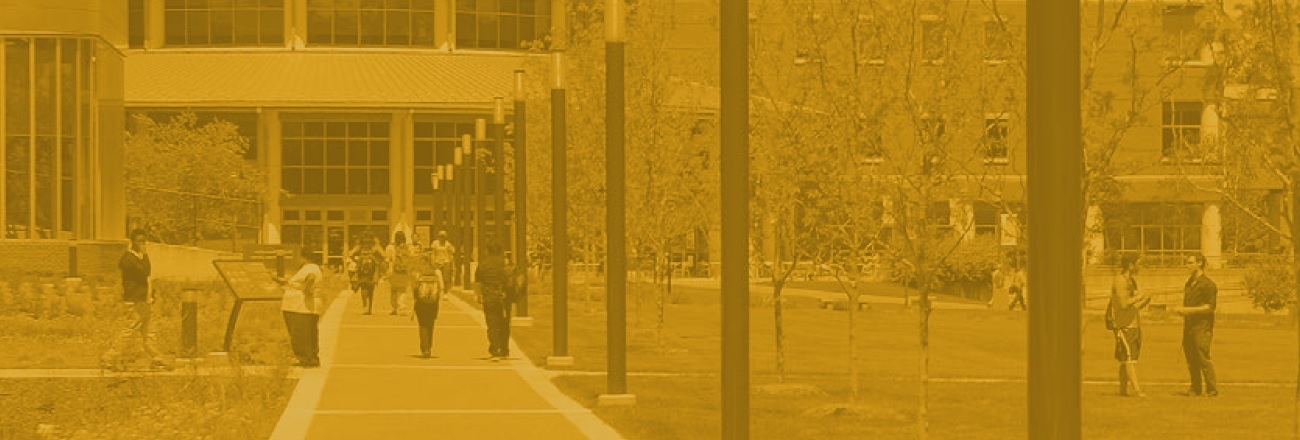Recognizing UMSL as a traditional campus for all types of students, optimize student recruitment and retention while providing an accessible and value-based education. Focus on specific strategies and initiatives that increase student recruitment, retention and student success for a diverse set of learners.
Goal 1
Continue to build on UMSL’s status as a premier public university for undergraduate, graduate and global students. Capitalize on first-year, regional, transfer, adult and global student markets while making UMSL attractive to a broader population – academically, co-curricular, environmentally, visually and inclusively.
Actions/Metrics
- Increase degree seeking students by 5% from 8128 to 8534 students.
- Increase international student population to 7.5% of the total degree seeking students from 348 to 630 students.
- Establish retention benchmarks for all academic programs by 2024 and set target goals for 1% increases/yr.
Goal 2
Provide financial transparency for students while being a top performer in social mobility. Look for ways to reduce or remove barriers for students of various populations to apply, enroll and succeed as students.
Actions/Metrics
- Maintain 100% high school graduation rate and postsecondary matriculation rate in the Bridge Program.
- Revise financial aid letters to make them more transparent to students.
- Increase the number of students utilizing work study by 10% through improving the process for students and employers.
Goal 3
Provide transformative learning experiences by fostering innovation, service, and research. Develop and embrace innovative, modern pedagogy through experiential learning that is delivered in flexible learning platforms.
Actions/Metrics
- Transform UMSL will lead to an increase in HyFlex classroom space.
- Increase participation in the Undergraduate Research Symposium by 5%.
- Increase faculty and graduate student instructor engagement in Teaching Circles & Faculty Learning Communities.
Goal 4
Foster a campus environment that creates resilient, adaptable, ambitious, purposeful, and engaged citizens. Support students in creating lifelong healthy habits and positive mental well-being through comprehensive programs and services.
Actions/Metrics
- Increase FTC students’ approval of social engagement opportunities by 10 percentage points to 66%
- Utilizing state-wide data from Missouri Partners in Prevention and campus-specific data from the Missouri Assessment of College Health Behaviors (MACHB) survey, develop programs targeting development of student health and wellness knowledge, awareness, and associated behaviors.
Goal 5
Ensure long-term success for students through collaborative efforts to increase persistence and retention. Make access to retention supports available from confirmation through graduation.
Actions/Metrics
- Engage with the National Institute of Student Success (NISS) to develop a recruitment/retention playbook. Metrics: Increase first to second-year retention of first-time college students from 68% to 80%; transfer students from 75% to 85%; pell students from 73% to 82%.
- Build out a co-curricular transcript model to review, monitor, and track students’ co-curricular engagement in addition to academic performance.
Goal 6
Define a target student market that distinguishes UMSL as the destination for working adults wishing to complete their degrees, reskill, upskill and advance earnings through industry-sponsored tuition and other payment models toward increasing enrollment.
Actions/Metrics
- Establish a Center for Workforce Development and increase the number of non-credit offerings through certificates and training opportunities for industry partners.
- Establish stronger ties to military families to offer degree completion pathways to both active-duty members and their dependents.
Goal 7
Support the faculty and staff engaged in the recruitment and retention efforts with professional development and by identifying and implementing best practices. Identify ways to coordinate efforts across units with the student experience.
Actions/Metrics
- Provide professional development opportunities for Academic Advisors and Coaches through UM Advising Development Program funding.
- Increase response rate of students taking the monthly academic advising survey by 25% to provide advising leaders with ongoing opportunities to for improvements.
